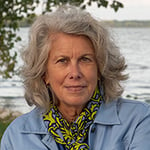Published: May 3, 2023
-May-03-2023-06-48-54-5865-PM.png?width=640&height=480&name=Untitled%20(640%20%C3%97%20480%20px)-May-03-2023-06-48-54-5865-PM.png)
May is National Older Americans Month. From the White House and state houses to board rooms, college campuses, doctor’s offices, concert halls, movie screens and just about everywhere, older men and women continue to play a major role in our country.
We applaud the successes of older adults, to name just a few:
- Musical performers Bruce Springsteen, 73, and Diana Ross, 79;
- Poet and environmental activist Wendell Berry, 88;
- Patagonia founder and philanthropist Yvon Chouinard, 84;
- Physicist Shirley Ann Jackson, 76;
- And of course current president Joe Biden, 80, and former president Donald Trump, 76.
This month is Older Americans Month, which means you’ll be hearing a lot about the lives of older adults, both their successes and the challenges they face.
According to the Administration for Community Living (ACL), which leads this national observance every May:
“When Older Americans Month was established in 1963, only 17 million living Americans had reached their 65th birthday. About a third of older Americans lived in poverty and there were few programs to meet their needs. Interest in older Americans and their concerns was growing. A meeting in April 1963 between President John F. Kennedy and members of the National Council of Senior Citizens led to designating May as “Senior Citizens Month,” the prelude to ‘Older Americans Month.’”
Snapshot of Today’s Older Americans
The ACL’s Profile of Older Americans (65+ years of age) found that in 2020:
- There were 55.7 million older adults in the U.S. - 30.8 million women and 24.8 million men;
- There were 104,819 people age 100 and older - more than triple the number in 1980 (32,194);
- While older adults are healthier overall, most have at least one chronic illness, the top being arthritis followed by cancer and diabetes.
Also, poverty increased from 8.9% in 2020 to 10.3% in 2021, which means 1 million more older adults had to rely on scarce resources to get by. In 2021, 10.6 million (18.9%) Americans age 65+ were working or proactively seeking employment.
Because of these and other challenges faced by older Americans, LeadingAge in December called for a White House Office on Aging Policy and is using Older Americans Month to highlight the need for such a policy.
“The concerns relevant to older adults, their family members and the hardworking people who serve and care for them span a range of areas – health; long-term care; housing; economics; environment; labor; education; budget; technology; agriculture; international/global issues; homeland security; and veterans affairs,” according to LeadingAge, the association of nonprofit providers of aging services.
Some of the Pluses of Aging
As the popular T-shirt says, “Life is Good” for many older adults, according to an AARP Research study, in collaboration with National Geographic Partners. “Thirty-four percent of adults 80-plus and 27% of those in their 70s report they are very happy, compared to 21% of those 60 to 69, 18% of those 50 to 59 and 16% of those 40 to 49.”
Relationships with friends, family and community and maintaining a healthy quality of life – nutritious diet, exercise, lifelong learning, civic engagement, helping others – contribute to their overall positive well-being.
One popular activity for older adults – an estimated one in five - is volunteering.
A recent article in Forbes Health cited a number of positive reasons to consider volunteering, based on a 2020 data review in the American Journal of Preventive Medicine that observed almost 13,000 participants of the Health and Retirement Study.
“They found that if someone volunteered for at least 100 hours per year (less than two hours a week) for four years, they experienced:
- Reduced risk of mortality
- Reduced risk of physical functioning limitations
- Increased amounts of physical activity
- Better psychosocial outcomes, such as increased optimism or a stronger sense of purpose in life.”
Are you making plans for your future? Kendal at Oberlin offers an active lifestyle with opportunities for lifelong learning, art and culture.
 In the past, Molly Kavanaugh frequently wrote about Kendal at Oberlin for the Cleveland Plain Dealer, where she was a reporter for 16 years. Now we are happy to have her writing for the Kendal at Oberlin Community.
In the past, Molly Kavanaugh frequently wrote about Kendal at Oberlin for the Cleveland Plain Dealer, where she was a reporter for 16 years. Now we are happy to have her writing for the Kendal at Oberlin Community.
About Kendal at Oberlin: Kendal is a nonprofit life plan community serving older adults in northeast Ohio. Located about one mile from Oberlin College and Conservatory, and about a 40 minute drive from downtown Cleveland, Kendal offers a vibrant resident-led lifestyle with access to music, art and lifelong learning.




